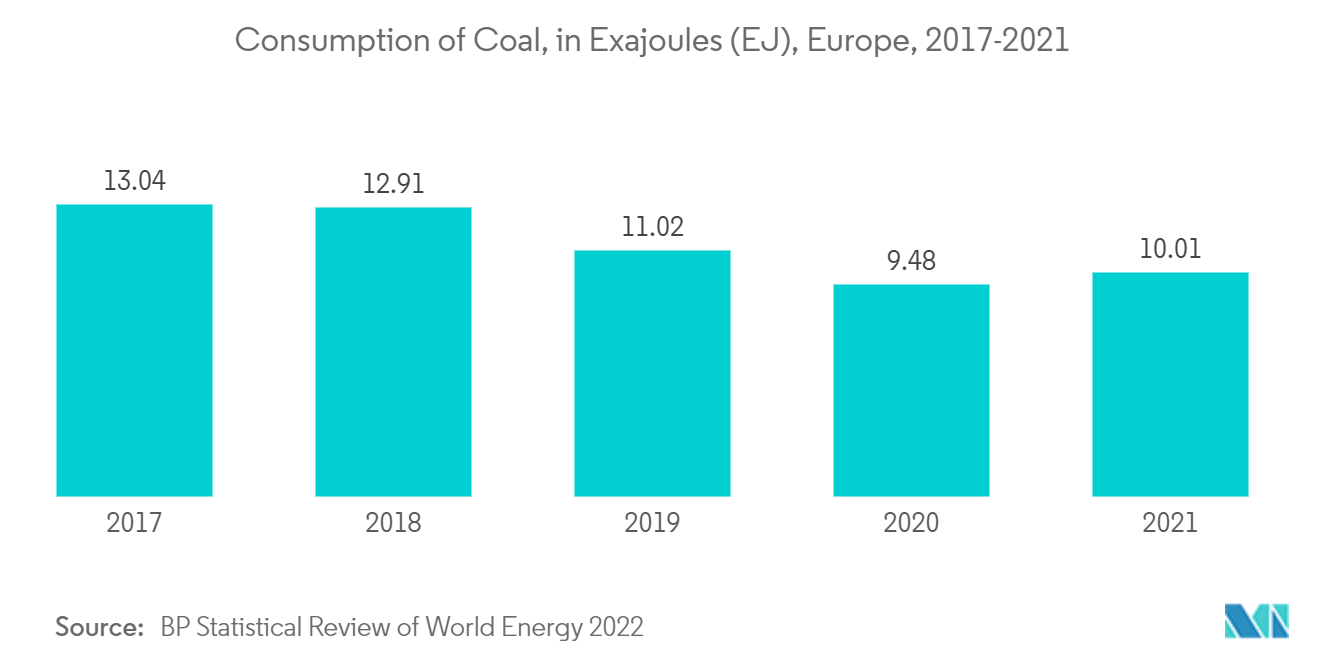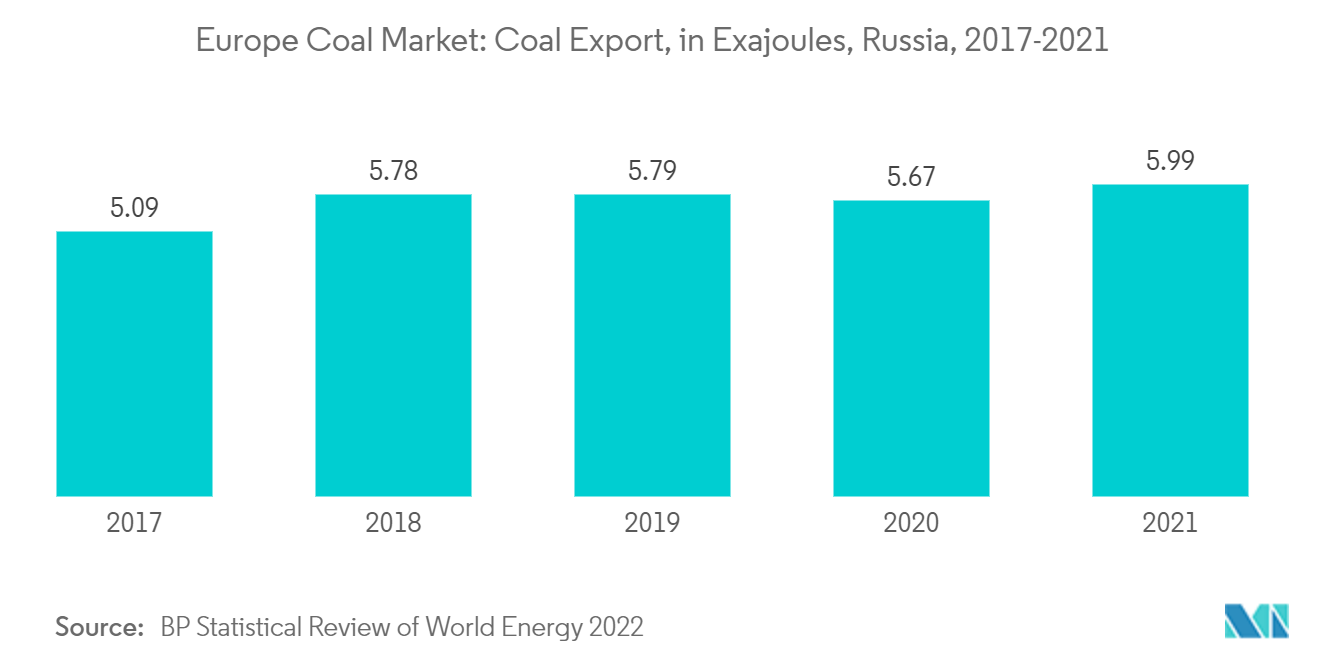Market Trends of Europe Coal Industry
Electricity Sector to Dominate the Market
- Although there has been a reduction in the usage of coal in most of Europe, new coal-fired thermal power plants are still being built in the region, with some that are still under construction and a few that are being planned for future use.
- Germany is the largest user of coal in the European Union. In June 2020, it launched a coal-fired power plant. However, due to massive resistance by the public and governmental organizations, many experts believe that it is likely to be among the last coal-fired power plants being built in the country.
- Coal consumption in Europe decreased by 4.6%, to 10.01 exajoules in 2021 from 15.98 exajoules in 2011. At the same time, the production of coal in the region dropped by 5.3% to 5.78 exajoules in 2021 from 9.94 exajoules in 2011. This decline in consumption and production is expected to restrain the market.
- A new mine opened in Poland in 2019. The mine was expected to start the extraction of coking coal in 2022. Local deposits of the resource are estimated at some 180 million metric tons. JSW SA is expected to invest more than EUR 684 million in the new facility by 2030, including more than EUR 205 million in the 2019-2022 period. Increasing investment in the sector and growing production of coal are expected to aid the market's growth.
- In 2021, Poland and Germany used more than 60% of all the hard coal used in the European Union. France and the Netherlands came in second and third, respectively. Hard coal is a significant type of coal that is used for specific purposes in the electricity sector. Increasing demand for electricity in the countries may aid the growth of the market.
- Since more money is being put into the electricity sector, it is expected to lead the market over the next few years.

Russia to Dominate the Market
- Coal mining has been a critical industry in Russia for a long time, with production costs among the world's lowest. When you add in the high costs of transportation, which are mostly for rail, the final price of Russian coal is almost the same as the prices offered by some of Russia's biggest competitors, like Australia and South Africa.However, countries near the Siberian region, like China and South Korea, due to low transportation costs, are the highest importers of coal from the country.
- Russia sends a lot of coal to China, which was expected to be around 1.46 exajoules in 2021. However, there is still a lot of room for exports to grow in the next few years.Similarly, South Korea imported approximately 0.60 exajoules of coal from Russia in 2021.
- Russia, which makes more coal than any other country in the world, wants to increase its output and exports over the next few years by opening more mines.The mining of coal in Russia increased by 8.8%, to 9.14 exajoules in 2021, from 8.42 exajoules in 2020.
- In the 2021 period, coal consumption in Europe remained stagnant at 10.1 exajoules. At the same time, the production of coal in the region increased by 5.9% to 5.99 exajoules in 2021 from 5.67 exajoules in 2020. The increase in consumption and production will drive the market.
- Hence, Russia is expected to dominate the European coal market due to the increasing production of coal and investments in the sector.


